The GT4 RS, shown along with other new products at the Los Angeles Auto Show, is almost as energy-efficient as the GT3. The front trunk lid with air ducts for brake cooling and the front fenders are made of carbon-fiber-reinforced plastic.

The first RS version in the 718 families, the Porsche 718 Cayman GT4 RS, confirmed our prediction by debuting the Cayman GT4 RS Clubsport racing variant. As we predicted, the cars got an atmospheric 4.0 “six” from the Porsche 911 GT3 and Cup GT3 Cup, de-energized from 510 hp to 500. Thus, the top model is 80 hp more powerful than the Cayman GT4 with PDK and 35 kg lighter. That is, for the first time, the GT4 has a lower weight than the GT3, 1,415kg vs. 1,435kg.
The overlapping lugs of the upper side ducts that affect sound and recoil, the titanium exhaust pipes, and the Porsche logo at the top of the lightweight rear window are signs of the Weissach package (minimum €12,000), which, among other things, exposes the carbon fiber trim. It can be with or without a semi-frame.
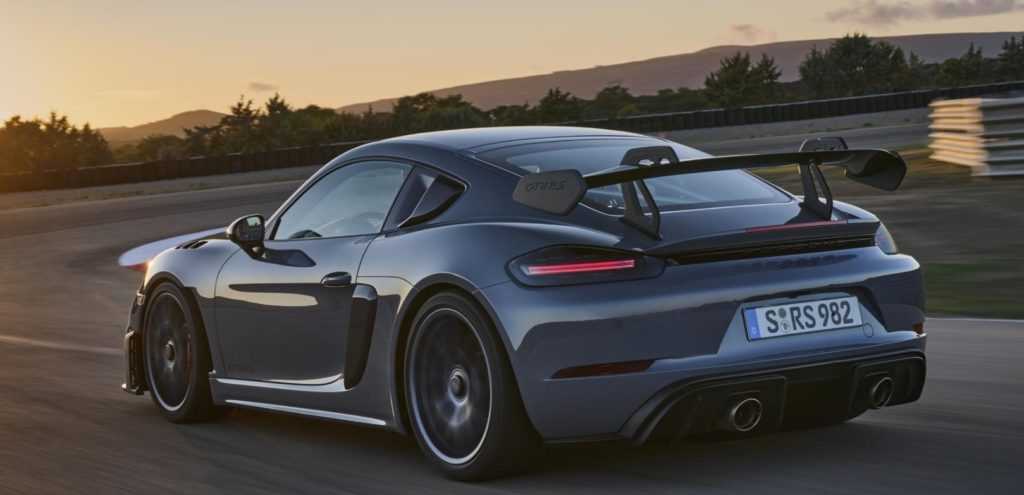
Compared to the GT4 engine, the torque has increased by only 20 Nm to 450 (the GT3 has 470 Nm). Nevertheless, the new engine required a radical revision of the intake system – additional air intakes took the place of the rear side windows. Such a solution has already been used in the racing Caymans, but the factory is using it for the first time. For a road car, the proximity of the intake duct to the passengers also makes the sound richer. The price for pleasure is the deterioration of the already poor visibility of the rear hemisphere.
A video of GT chief Andreas Pröninger talking about the car shows the new engine compartment lid with easy access to the waxed race air filter and the carbon fiber ducts leading to it.
The Cayman GT4 RS comes exclusively with a seven-speed PDK lock-up robot and a new shortened range, which makes it reach 100 km/h in 3.4 seconds, half a second faster than the GT4. The top speed has increased by 13 km/h to 315. Adjustable suspension, assembled on articulated joints, equipped with new springs, shock absorbers, and stabilizers. In the Weissach package, the stubs are made of carbon fiber. The original geometry is designed to work with the optional Michelin Pilot Sport Cup 2 R semi-slick.
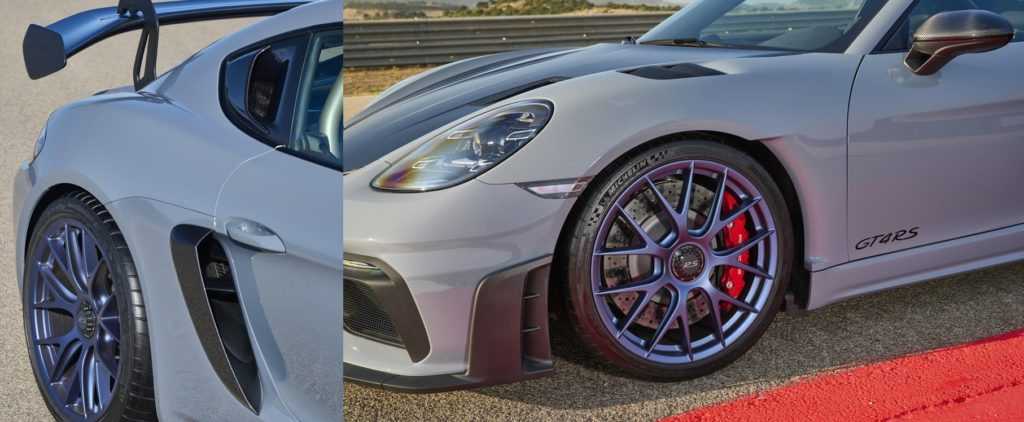
The inverted aluminum-mounted anti-wing is more effective than the standard one and offers a greater adjustment range. The front brakes have been redesigned: six-piston fixed brackets grip 408mm discs, compared with the GT4’s 380mm.
Much of the work done is hidden from view. For layout reasons, the individual throttle valves – a highlight of the third-generation engine – are rotated 90º. Here it is impossible to use the exhaust system from GT3 with low resistance, just as it is impossible to leave the standard from GT4 – a new node is required. Impresses the volume of aerodynamic improvements and measures to reduce weight. For example, if in the usual Clubsport package optional bolted half-frame assembled from steel pipes, for Weiss package used titanium.

The door panels and even the mats have been lightened. The PDK selector is borrowed from the GT3, but is used with the cover from the GT4 “mechanics”. Note that in the official photo, the multimedia system screen is obscured as if it’s not there. But in the North American market, you can’t order a Cayman without a rearview camera, and therefore without an infocomplex.
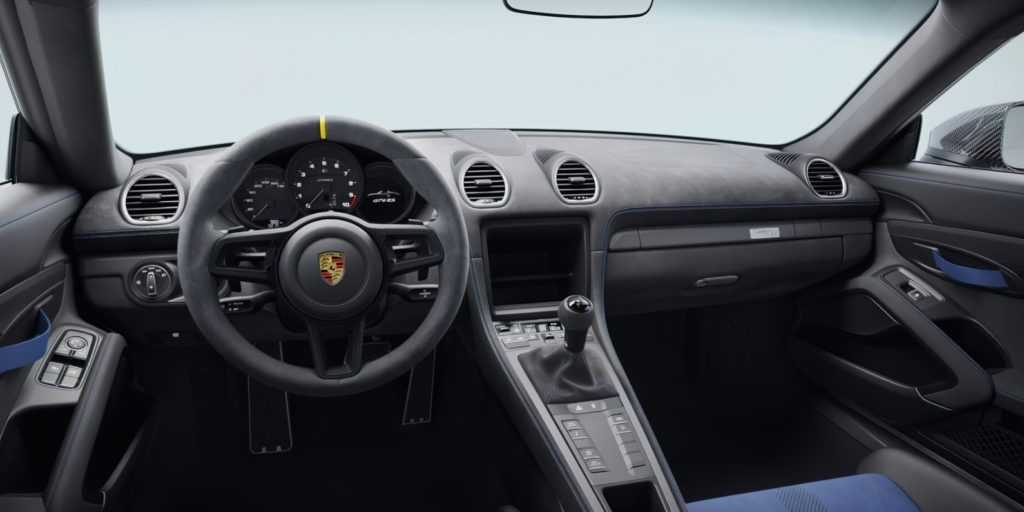
Here is a picture from the European configurator, which shows the lightest possible package, like the one that was used for the Nordschleife races. Instead of the basic carbon fiber buckets (usually, they ask for 5,300 euros) you can order free seats with electric adjustments.
An adjustable splitter, underbody aerodynamic panels, air intakes, and diffuser have been optimized. The GT4 RS generates 25 percent more downforce than the GT4 in its most wickedly circular mode. Not surprisingly, at the Nürburgring, the newcomer brought the 420-horsepower version as much as 23.6 seconds, posting a time of 7:04.511 over the 20.6km course. We have not yet seen what’s left of the front trunk, as the front has additional air ducts to cool the larger brakes. Carbon-ceramic is available as an option, of course.

The wheels remain 20-inch, but for the GT4 RS, the originally forged wheelsets have been created. In the base they are aluminum, and in the premiere photos, the Cayman flaunts magnesium ones for 15 thousand euros, requiring a Weiss package. In total, they reduce unsprung weights by 10 kg. A blue color is an option.
Andreas Pröninger, head of Porsche’s GT division, voiced in an interview the estimated production cycle of the RS in the range of two to two and a half years. This is the first time we’ve heard that at least the top model of the 718 families will last until 2023, or even 2024. There’s no production limit. Prices for the Cayman GT4 RS on the home market start at 141,338 euros (11.6 million rubles), which makes the novelty 39% more expensive than the GT4 version (from 101,235 euros). Taking into account the volume of modifications, we thought that the difference will be more impressive. The more pity that GT4 RS won’t be delivered to Russia.
According to preliminary data, the problem is in discrepancy track-car to some of the requirements for noise which once closed the way to our market for Porsche 911 R. In fact, the exactly unprecedented affinity of the vocal atmospheric engine with the driver was catered by creators of the new funkar. Rumor has it that we won’t see the upcoming GT3 RS for the same reason. In Europe, orders for the GT4 RS are already being taken, and the start of deliveries is scheduled for December… Now about Clubsport, without which we wouldn’t have the RS and vice versa.
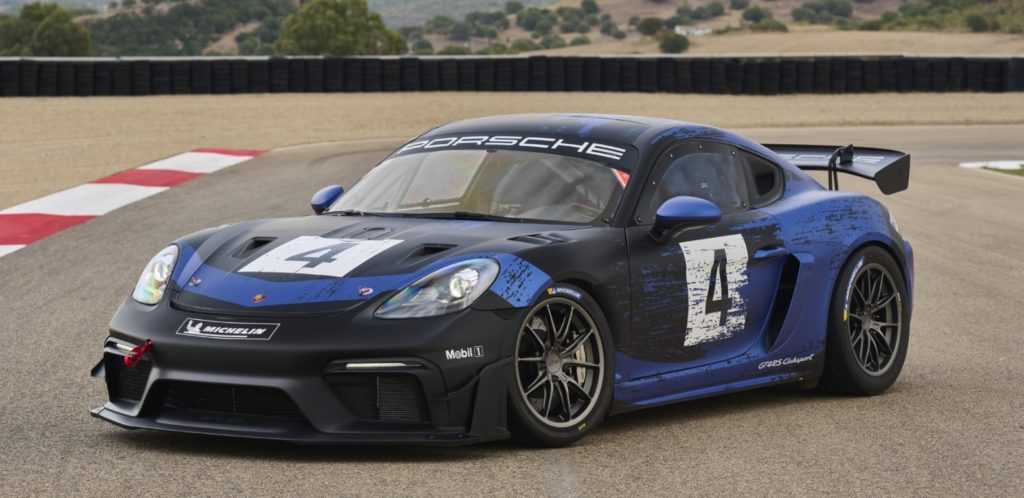
The dampers have been reconfigured with separate compression and rebound adjustments, and adjustable bayonet-type anti-roll bars have been applied at the front and rear.
The 2019 Cayman GT4 RS Clubsport differs from the 2019 version not only by the new 500-horsepower 4.0 engine (here it produces 465 Nm), which is 75 hp more powerful and 40 Nm more torque than the previous 3.8 unit. Unification with the road-going RS has invested in a new transmission range. As a result, the PDK robot on the racing car is no longer limited to six gears but can use all seven.
Peak traction is shifted to six thousand rpm, 600 rpm lower than before. At the same time, maximum power develops 800 rpm later, at 8300. The cutoff is moved to 9,000 rpm, as in the road version. The extended working range of the engine should raise the dynamics of the car on the ring.
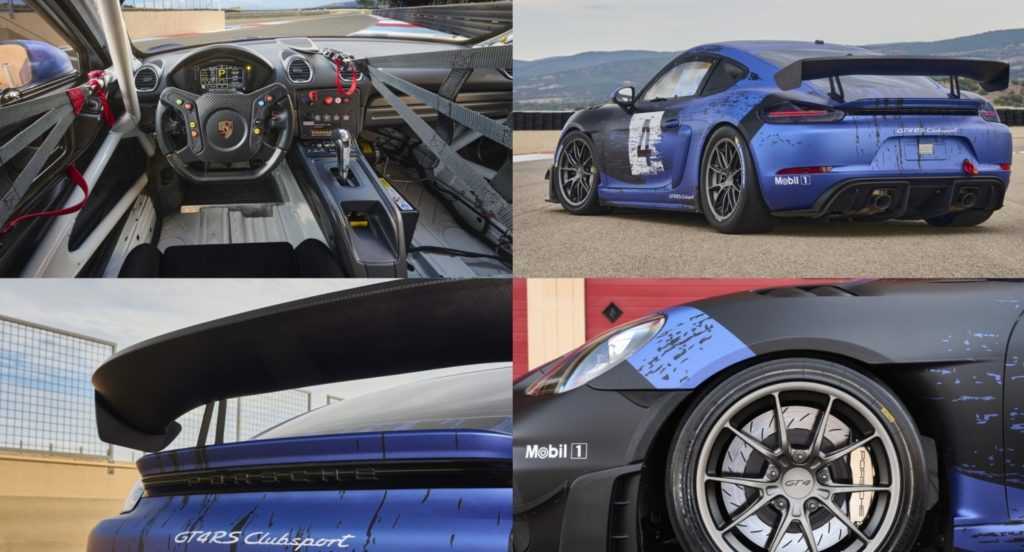
The inverted wingtip has a 20-millimeter Herni shield on the trailing edge. The aerodynamic components have been redesigned, from the front bumper to the front fenders and diffuser. Two exhaust systems are prepared for tracks with different noise level requirements.
The new version has expanded the range of parts made of ecological linen-based biocomposite. Now the doors, antifender, front wing, fenders, aerodynamic front bumper surround, and a new steering wheel are made from it. New foam is used for the energy-absorbing elements in the driver’s door.
The company assures that the new Clubsport shows 2% better times on the circuits than in the past. At the same time, the homologated machine is produced completely ready to go. Without any additional modifications, it can be used in the SRO racing series. It costs 196,000 euros excluding taxes and is designed to build on the success of its predecessor, which has found about 500 buyers since 2019.
